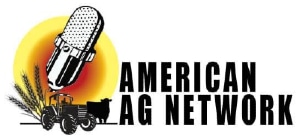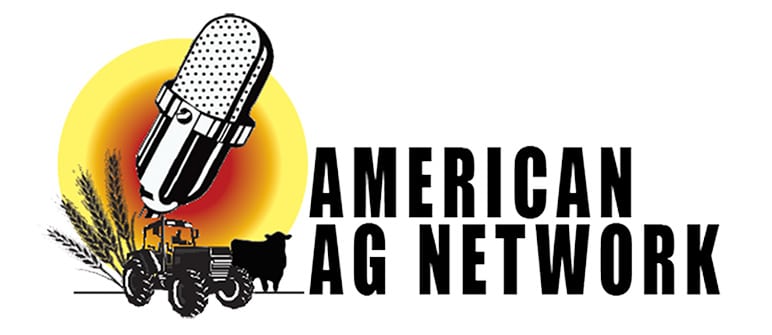RESEARCH TRIANGLE PARK, NC, June 15, 2023 — As part of ongoing efforts to support growers and retailers doing the Biggest Job on Earth, BASF Agricultural Solutions has enhanced its university research partnerships to track weed resistance developments across the U.S., while also continuing to innovate new solutions to address the weed challenges of the future.
“BASF is committed to helping farmers tackle resistance issues, which is why raising awareness around HPPD resistance is a top priority for us,” said Daniel Waldstein, Ph.D., Technical Marketing Manager at BASF. “HPPD resistance has been on the rise for some time, and many growers don’t even realize it exists in their fields yet.”
University researchers say corn crops have faced increasing weed pressure under the canopy, much of which goes unseen due to the crop height and traditional one-pass management practices.
“HPPD inhibitor herbicides (Group 27) have become the foundation for PRE, early-POST, POST, and/or layered residual POST weed control programs in corn throughout most of the United States,” said Dr. Rodrigo Werle, Assistant Professor & Extension Cropping Systems Weed Scientist, University of Wisconsin-Madison.
Dr. Werle adds that the continuous overreliance on Group 27 herbicides will likely result in widespread resistance, thus preventative measures must be taken.
“There is an urgent need to incorporate and rotate mixtures of effective soil residual and foliar herbicide programs containing as many sites of action as possible with additional non-chemical weed control strategies (for example crop rotation, narrow row spacing, cover crops, cultivation). Farmers are having a challenging time controlling weeds such as waterhemp, Palmer amaranth, horseweed, common ragweed, giant ragweed, kochia and other species in soybean and should take advantage and continue to be good stewards of the wide range of effective herbicide programs available for weed control in corn,” concludes Dr. Werle.
In addition to the University of Wisconsin-Madison, other universities nationwide, including West Lafayette, Indiana, Purdue, and University of Nebraska-Lincoln are also actively reviewing the effectiveness of layered residuals.
“Crop advisors have gradually lost confidence in relying completely on HPPD-inhibiting herbicides for postemergence control of waterhemp in corn” said Dr. Bryan Young, Professor of Weed Science, Department of Botany and Plant Pathology Purdue University. “This problem is compounded with waterhemp resistance to glyphosate and other foliar-active herbicides, which highlights the importance of using soil residual herbicides throughout the growing season to help prevent waterhemp emergence.”
Similar indicators are present across the Midwest.
“We have confirmed Palmer amaranth and waterhemp resistance to atrazine and HPPD-inhibiting herbicides; particularly Palmer amaranth resistance to atrazine and HPPD-inhibiting herbicides is widespread in southcentral Nebraska, the area where the majority of fields are irrigated and produce high-quality field corn and seed corn,” says Dr. Amit Jhala, Associate Department Head & Extension Coordinator, Professor/Extension Weed Management Specialist, Department of Agronomy and Horticulture at the University of Nebraska-Lincoln.
“Growers in Nebraska are early adopters and looking for additional options for control of glyphosate, atrazine, and HPPD-inhibiting herbicide-resistant Palmer amaranth in corn and popcorn. I have been testing Surtain in 2023 growing season for weed control and crop safety and it provides excellent early season control of both herbicide-resistant waterhemp and Palmer amaranth,” Dr. Jhala added.
This fall, BASF will be analyzing and summarizing data from numerous field trials on the residual efficacy of Surtain® herbicide. We will be particularly focused on the advantages of Surtain herbicide on key resistant weeds, giant ragweed, waterhemp and Palmer pigweeds. In addition, we are conducting research with our colleagues in Germany and plan to have more information to share on the advantages of Surtain’s solid encapsulation over the conventional liquid encapsulation herbicides currently on the market. In addition, by 2025, we plan to introduce 25 new products to market, and we also have 8 new active ingredients in development to help growers with a myriad of needs, execute the Biggest Job on Earth.
“BASF will continue to launch new products that will provide growers with good alternatives to HPPD inhibitors,” Waldstein says. “Products like Verdict® herbicide and Status® herbicide are currently available for growers looking to tackle HPPD-resistant weeds. Pending EPA approval later this year, Surtain herbicide will be a new residual preemergence with early postemergence flexibility option available as well.”
BASF believes that farming is the Biggest Job on Earth. As it gets more complex and more important, we are committed to finding the right balance, so that farmers, our channel partners, and future generations can all flourish.
The agriculture industry must produce more food by 2050 than in the rest of human history combined.
Extreme weather could cause up to a 30% reduction in food production.
In 1960 a US farmer fed 25 people. Today they can feed 155.
BASF understands the value their seed, seed treatment and crop protection offerings bring to an operation. We back it up with expert advice, consistent and proven local performance, and on-farm support.
You can reach out today to your local BASF rep finder: https://repfinder.basf.com/ to help source your needs for a successful 2023 and beyond.
About BASF’s Agricultural Solutions division
Farming is fundamental to provide enough healthy and affordable food for a rapidly growing population while reducing environmental impacts. Working with partners and agricultural experts and by integrating sustainability criteria into all business decisions, we help farmers to create a positive impact on sustainable agriculture. That’s why we invest in a strong R&D pipeline, connecting innovative thinking with practical action in the field. Our portfolio comprises seeds and specifically selected plant traits, chemical and biological crop protection, solutions for soil management, plant health, pest control and digital farming. With expert teams in the lab, field, office, and in production, we strive to find the right balance for success — for farmers, agriculture, and future generations. In 2022, our division generated sales of €10.3 billion. For more information, please visit www.agriculture.basf.com or any of our social media channels.
About BASF
BASF Corporation, headquartered in Florham Park, New Jersey, is the North American affiliate of BASF SE, Ludwigshafen, Germany. BASF has approximately 16,000 employees in North America and had sales of $25.7 billion in 2022. For more information about BASF’s North American operations, visit www.basf.com/us.
At BASF, we create chemistry for a sustainable future. We combine economic success with environmental protection and social responsibility. More than 111,000 employees in the BASF Group contribute to the success of our customers in nearly all sectors and almost every country in the world. Our portfolio comprises six segments: Chemicals, Materials, Industrial Solutions, Surface Technologies, Nutrition & Care and Agricultural Solutions. BASF generated sales of €87.3 billion in 2022. BASF shares are traded on the stock exchange in Frankfurt (BAS) and as American Depositary Receipts (BASFY) in the United States. Further information at www.basf.com

